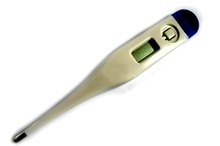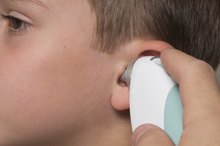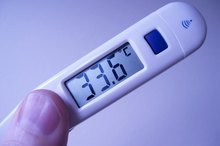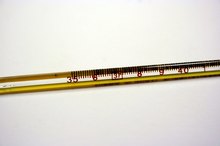What Is a Normal Temperature Under the Arm?
Normal body temperature traditionally is thought to be about 98.6 degrees Fahrenheit or 37.0 degrees Celsius. This measurement, however, usually corresponds to temperature taken orally. Body temperature may vary according to where it is measured. Although measurements taken under the arm may not always be completely accurate, they can give you an approximate figure for determining whether or not you have fever.
Underarm Temperature
Temperature taken under the arm usually is considered to be less accurate than most other body locations for measuring temperature. This measurement, also known as "axillary temperature," tends to be about half a degree to a degree below oral temperature 1. Therefore, normal axillary temperature would range between 97.6 degrees and 98.1 degrees Fahrenheit (36.4-36.7 degrees Celsius).
Other Measurement Sites
How to Read an Underarm Temperature With a Digital Thermometer
Learn More
Rectal temperature is thought to be most accurate when determining actual body temperature for children. Normal range runs between 97 and 100 degrees Fahrenheit or 36.0-37.7 degrees Celsius. Ear temperature (or "tympanic" temperature) also is very accurate in children and adults. 99.5 degrees Fahrenheit (37.5 degrees Celsius) is the normal temperature for this method. Measuring body temperature orally is perhaps the most traditional means of measurement. Although 98.6 degrees Fahrenheit is the standard norm, healthy range can vary between 98.2 and 98.8 degrees (36.7-37.1 degrees Celsius).
- Rectal temperature is thought to be most accurate when determining actual body temperature for children.
- 99.5 degrees Fahrenheit (37.5 degrees Celsius) is the normal temperature for this method.
How to Measure Temperature in the Armpit
Place a clean thermometer under the arm and place the arm back down on top of it snugly. If you are using a digital thermometer, it should beep when it is finished measuring. If you have a glass thermometer that uses alcohol or galinstan as its means of measurement, leave the thermometer under the arm for at least five minutes. Be careful to stay still when using a glass thermometer so that you don't cause it to break. It is recommended that glass thermometers containing mercury be thrown away, since the mercury is toxic to humans and animals.
- Place a clean thermometer under the arm and place the arm back down on top of it snugly.
- If you are using a digital thermometer, it should beep when it is finished measuring.
How to Tell if a Thermometer Is Mercury
Learn More
Make sure your thermometer is clean. Wash it in slightly warm, soapy water before and after each use. If you have been exercising (or eating and/or drinking in the case of oral thermometers), wait at least 15 minutes before taking your temperature. When taking axillary temperature, use an electronic thermometer for the most accurate results 1. Read it as soon as it beeps, indicating that the measurement is complete.
- Make sure your thermometer is clean.
- Wash it in slightly warm, soapy water before and after each use.
Pros and Cons
Measuring temperature under the arm has benefits and disadvantages. The obvious downside is that it is less accurate than other means of measurement. An advantage is that it is not very invasive. Many children have a hard time holding still for temperature measurement in other areas of the body, but they can tolerate having the thermometer at the armpit.
- Measuring temperature under the arm has benefits and disadvantages.
- The obvious downside is that it is less accurate than other means of measurement.
Related Articles
References
- (2008). "How to Take An Axillary Temperature." Retrieved June 15, 2009, from Drug Information Online website.
- Sulaski Wyckoff A. Thermometer use 101. AAP News. 2009;30(11);29. doi:10.1542/aapnews.20093011-29a
- El-Radhi AS. Determining fever in children: the search for an ideal thermometer. Br J Nurs. 2014;23(2):91-94. doi:10.12968/bjon.2014.23.2.91
- Geijer H, Udumyan R, Lohse G, Nilsagård Y. Temperature measurements with a temporal scanner: systematic review and meta-analysis. BMJ Open. 2016;6(3):e009509. doi:10.1136/bmjopen-2015-009509
- U.S. Environmental Protection Agency. Mercury thermometers. Updated June 26, 2018.
- Stanford Children's Health, Lucile Packard Children's Hospital. Fever in children.
- American Academy of Pediatrics: healthychildren.org. How to take a child's temperature. Updated November 21, 2015.
- Obermeyer Z, Samra JK, Mullainathan S. Individual differences in normal body temperature: longitudinal big data analysis of patient records. BMJ. 2017;359:j5468. doi:10.1136/bmj.j5468
Writer Bio
Charlotte Johnson is a musician, teacher and writer with a master's degree in education. She has contributed to a variety of websites, specializing in health, education, the arts, home and garden, animals and parenting.






